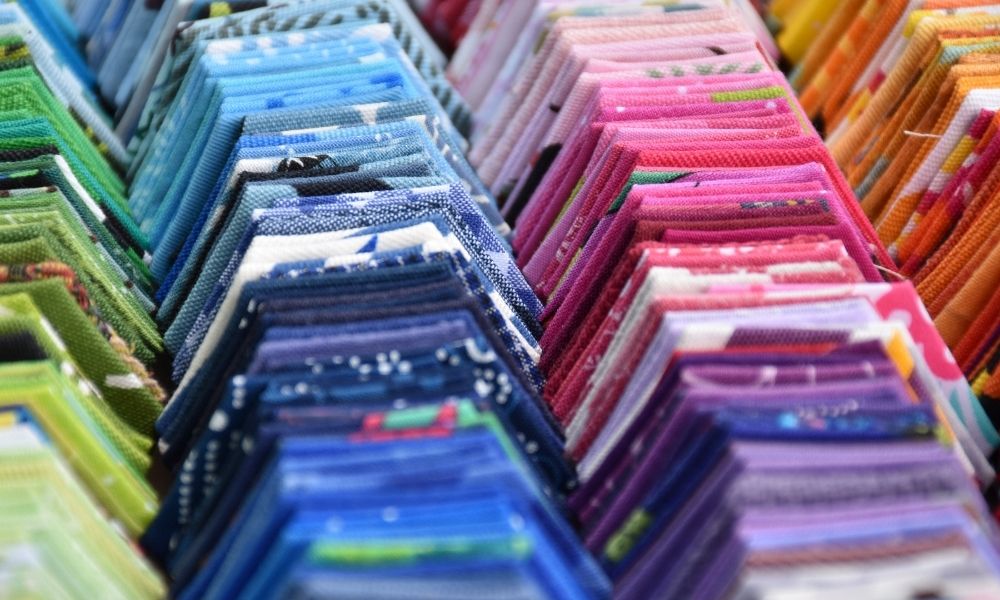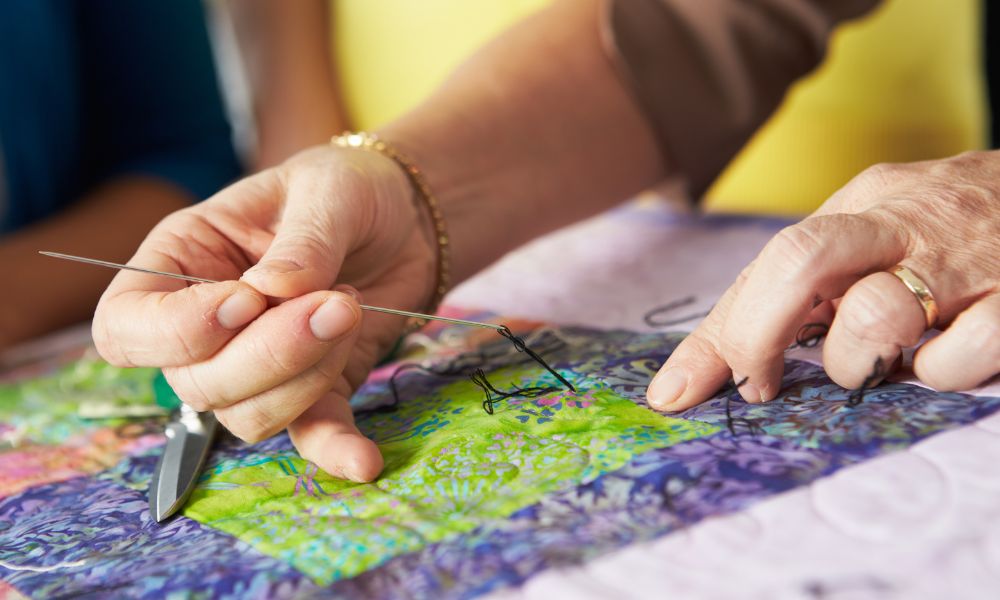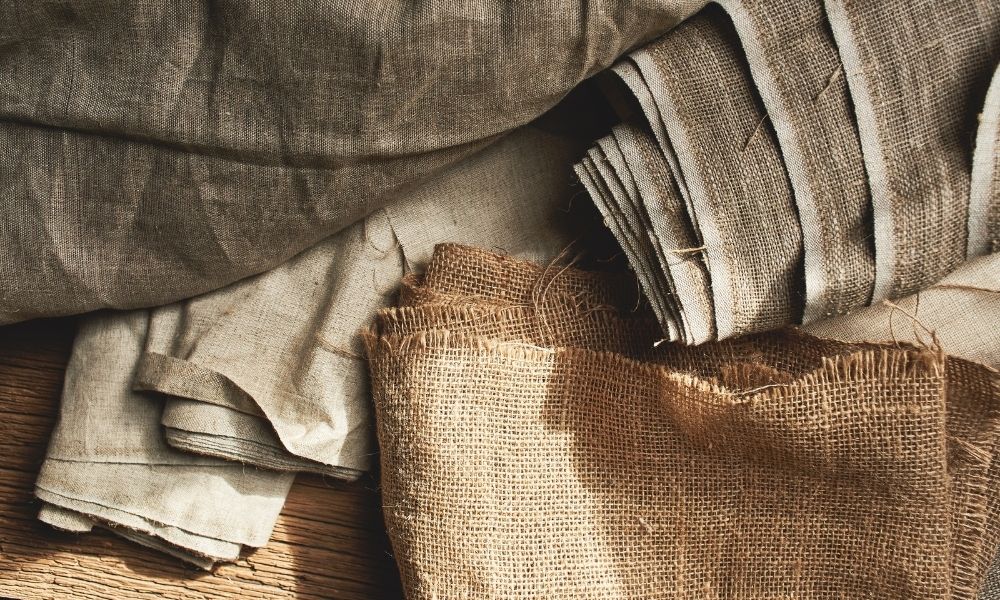How Colorful Quilting Fabrics Are Produced

The power that thread and a needle hold are immense when quilting fabrics together. Exposing you to vibrant colors and exciting patterns, quilting is a hobby that allows your creativity to soar at its highest. Taking a step back to admire your hard work, you can’t help but wonder: how are these memorizing panels and the fabrics made?
When examining the detail within the fabrics, it’s clear that there has to be an intricate process that manufactures these delightful pieces. Hang tight because we’re about to delve into how colorful quilting fabrics are produced, starting from their extraction to their journey to your local store.
Fabric Material Basics
Quilting fabric comes in different materials that require varying processes. These manufacturing processes make significant differences, but here are a few basics you need to know first.
Cotton
Cotton is the most widely used natural fiber in clothing and quilting. Once extracted from the cotton plant, the seeds are removed and separated into bales. Afterward, cotton fibers are spun into yarn and made into soft, breathable textiles.
Quilting Cotton
Made from 100 percent cotton, quilting cotton is a medium-weight fabric with a sturdy body. The textile’s durability allows it to hold shape even after washing. While it is a forgiving material for most beginners, quilting cotton requires frequent ironing since it wrinkles easily.
Wool
Wool is another natural fiber that undergoes a cleaning and sorting process before being made into long strands. These long strands are then spun into yarn, washed for a final time, and woven into fabric.
Silk
Did you know that silk comes from a worm? This unique textile lines the cocoon of the silkworm. After removal, the lining becomes a thread that requires additional threading before weaving into fabric.
Nylon
Most nylon material comes blended with pure nylon and other fibers, such as cotton or polyester. As a synthetic artificial textile, nylon yarn results from melting chips and drawing them through a spinneret. This process allows the creation of different-sized strands to use when wrapping the yarn.
Polyester
Polyester fabric is the strongest and most versatile synthetic fiber. Made from plastic pellets, the material melts and moves through a spinneret to create long threads. These threads cool and harden into a fiber used to make yarn.
How Is Quilting Fabric Made?
Once manufacturers obtain the raw material, the substances enter the fabric-making process.
Becoming Yarn
The first step in fabric-making involves spinning the raw material into yarn. Manufacturers can accomplish spinning by hand or with the help of mechanical wheels. Spinning oils combine with fibers to increase cohesion and reduce friction.
Threading Together
Known as "weaving," this step involved joining two sets of the yearn together on a loom. The “warp,” or top set of thread, stretches parallel on the machine. Another group called the "weft" extends over, under, and back and forth through the warp threads to create an integrated fabric.
Processing
After weaving, threads fresh off the loom have a closer resemblance to fabric. However, the material may have discoloration and impurities, such as seed particles. To obtain a cleaner look, fabrics undergo a cleaning stage that uses chemicals to remove oils and waxes accumulated during the spinning stage.
How Is Quilting Fabric Colored?
Pre-Treatment
Before coloring quilting fabric, the textiles enter a pre-treatment step to ensure they accept dyes. De-sizing removes the chemicals from the warp yarns in the woven material. Bleaching brightens white fibers and makes the cloth more absorbent, improving the outcome of the dying process.
Afterward, mercerizing the textile swells the fibers while promoting strength, luster, and dye absorbing abilities. Lastly, carbonizing removes vegetable residue traces from the fabric.
Dyeing and Printing
Dyestuffs and coloring chemicals are the main components of the dye and print stage. Fabric dying occurs during spinning or when spinning two dyed fibers. Pigments are more common to use during printing methods. Color sticks to the textile’s surface using a polymeric resin or binder. Other printing methods include transfer or digital printing.
Finishing Treatments
To add an aesthetic appeal to the finished fabric, textiles undergo special steps like flame retardance, antibacterial treatment, and water resistance. After applying the special coatings, the quilting textiles are ready for transport.
How Is Quilting Fabric Transported for Retail?
After the final treatment step, the fabric turns into finished garments, clothing, shoes, and furniture items like carpets and car seats. However, some materials remain unaltered and ship to retail craft stores worldwide for quilting purposes.
The fabric remains wrapped around cardboard to mitigate the chance of wrinkling or deterioration.
What Else Is There To Know About Colorful Fabrics?
Colorful quilting fabrics are beautiful; however, beauty can fade when the fabrics are stored improperly. Due to their vibrant coloring, materials should be kept away from direct sunlight to avoid fading and discoloration over time.
It’s also essential to store similar tinted fabric together to avoid dye transfer. Rich hues like reds, blues, and purples can transfer to lighter colored textiles and ruin them. Here are a few ideas to inspire your color-coding system.
Fabric Storage Closet
A closet dedicated to fabric storage is ideal if you have the space. Placing wire-drawer storage racks in the room allows you to keep your quilting fabrics in secure areas away from the sun.
Plastic Bins
Plastic tubs are the go-to solutions for many quilters. You can organize textiles by color, manufacturer, and patterns for a comprehensive storage system.
Panel Keeper
You can store fabric panels by folding and placing them into a page protector. This method allows access to each panel and protects them from outside elements.
After making it through that information breakdown, it’s safe to say that fabric goes through a lot before making its way into your creative and crafty hands! Specific processes can affect the material quality and thread count, resulting in different project outcomes.
Learning how colorful quilting fabrics are produced introduces a deeper appreciation for the materials and for those who work to supply them to us. At Lindley General Store, our passion for quilting and crafting enables us to bring forth high-quality fabric in Canada so that you can stitch your best work!
We operate solely online, so our entire product selection is available with just a click. Don’t hesitate to explore our catalog!






Comments